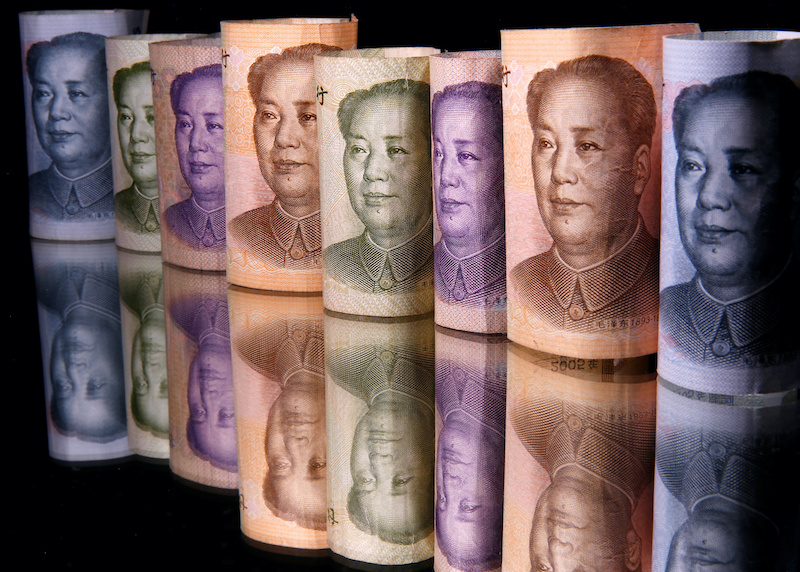The Chinese yuan dropped below the key mark of 6.9 per dollar early on Monday, following Federal Reserve chairman Jay Powell’s warning on Friday that interest rates would be stay high for however long it takes to lower soaring inflation.
The yuan has lost more than 2.5% against the dollar this month and Powell’s hawkish remarks put further pressure on the Chinese currency – and stock markets around the world.
The yuan is on course for its biggest monthly drop since April when Covid lockdowns in Shanghai and other Chinese cities heightened worries over economic growth in the world’s second-largest economy.
Prior to market opening, the People’s Bank of China (PBOC) set the midpoint rate at 6.8698 per dollar, 212 pips or 0.31% weaker than the previous fix 6.8486 and the weakest since August 28, 2020.
But Monday’s fixing came in much stronger than market expectations. It was 101 pips firmer than Reuters’ estimate of 6.8799.
Market participants have been closely monitoring the daily guidance for hints about the authorities’ position on the yuan. A firmer-than-expected fixing could mean they are getting increasingly uncomfortable with the currency’s decline.
But the fixing failed to stall selling, with both the onshore and offshore yuan quickly breaching the psychologically critical 6.9 per dollar level in early Asian trade.
The onshore yuan opened at 6.8990 per dollar and fell to 6.92 at one point, the weakest since August 24, 2020. It last traded at 6.9132 by 0222 GMT.
Its offshore counterpart followed suit and weakened to a two-year low of 6.9308 per dollar in early deals before trading at 6.9247 as of 0222 GMT.
“The next target for the yuan could be 7 per dollar,” said a trader at a foreign bank.
Traders and analysts said a surging dollar, domestic economic slowdown and China‘s apparent monetary easing bias to support the economy weighed on the currency.
“RMB weakened further on the back of rising yield differential between China and the US,” said Tommy Xie, head of Greater China research at OCBC Bank, noting regulators will likely monitor trends and keep the volatility in check.
Several traders said major state-owned banks, which usually trade on behalf of the central bank, have not yet stepped into the market to stem the yuan’s fall.
- Reuters with additional editing by Jim Pollard
ALSO SEE:
China’s SMIC to Splash $7.5bn on Fourth Chip Fab in Tianjin
























